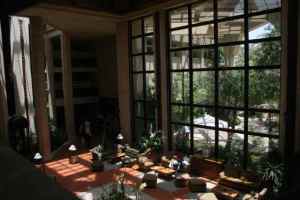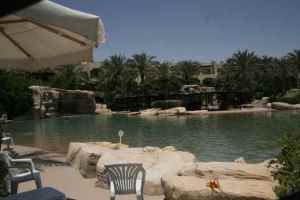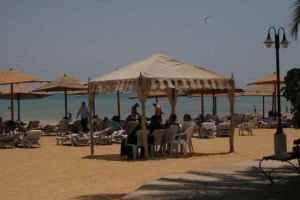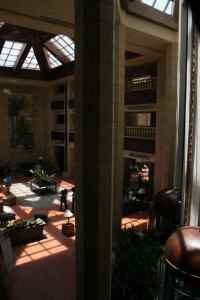As a child, I think we all had a favorite amusement park ride. Whether it was the rollercoaster or the haunted house or the spin-until-you-hurl ride – it would have been the coolest thing to be able to ride that every day. But as an adult we realize that after a week, maybe even just a few days, the thrill of the drops, bumps, jumps and unknowns, would become mundane and the initial excitement would wear off; leaving us bored and looking for the next adrenaline hit.
Welcome to Cairo driving: the never-ending adrenaline ride for today’s adult seeking adventure, intrigue and just a little harrowing to keep the blood flowing. Now, I haven’t been a driver yet, so those impressions will have to come later, but I can tell you as a passenger you see a lot, maybe too much. But I’m proud to say that I have stopped screaming, and barely even flinch anymore, though I do still sometimes employ the “Don’t Look, Don’t Scream” theory when I feel it may be necessary.
The basic issue of Cairo traffic is made up of four components (as I see it):
1. There are a lot of cars, big buses, shuttle buses, trucks, taxis, motorbikes, pedestrians, donkey carts, and the occasional psychotic bicycle rider on the road at all times.
2. There are no regular traffic lights, very few stop signs, and the traffic police who are well-spread out and occupy many corners do little more than wave and wear a hat.
3. Where there are lines on the road, it’s irrelevant, as no one obeys them (that goes for one-way streets, too).
4. If there are traffic laws, they are enforced omnipotently and you only know that you’ve gotten a ticket when you annually go to register your car and have to pay any outstanding fines.
So, throw all that in with a city of 20 million people during the day, and you have what we could call tangible chaos.
I will say that my biggest amazement is that there aren’t piles of fatalities every day on every corner. Whether it’s the will of Allah, or basic luck, Egyptian drivers seem to eek by.
The smaller roads, back in the suburbs, or on the outskirts, tend to have fewer issues. Although these are often are the scene of a one-way road being used for the “one-way” the driver wants to go. Maybe that’s what the sign really means?
The larger roads tend to have more of a stock-car-racing-type feel; with cars coming up on either side of you (often clipping mirrors) and cutting in front even when it looks like laws of physics will be broken. Maybe the laws of physics don’t apply here? I’ve seen enough incidents to think that might be the case.
I have been told that Egyptians do not concern themselves with what it behind them or with using their rearview mirror. They focus on the front of their car and figure those behind them will mind their rear. And it certainly seems to be the case. And when in Rome… we have found that the amount of concentration needed to focus just on what’s in front and coming up beside, leaves very little for concerns about what’s behind, so they definitely have something there.
I’ve mentioned some of the sights we’ve seen on the roads, including the trucks piled high and the propane donkeys. Just two days ago I saw a truck with wooden slated sides, piled as high as possible with round basketball-sized watermelons, and perched on top was an older gentleman willing the heavens to keep him from becoming an ingredient in watermelon smash. One quick stop, one bump from a side-passing car, or one jolt of a speed bump, and he’d be airborne. I hate to say it, but I’ve also seen children perched on top of the truck’s contents. I even saw an elderly woman sitting on a bucket right at the edge of a truck’s open gate, while two younger men were riding in the cab.
I forgot to mention the use of speed bumps here. They’re quite common, and are used in lieu (I assume) of traffic lights. They do reduce speed, however the issue with the speed bumps is that they are rarely painted so if you don’t know the road well, you might not see one before you’re flying over it. Also, I’ve been told that they tend to be ambulatory. So not only do they employ speed bumps here, but also speed trenches, which are caused when one apparently removes a speed bump (I guess they set in roots).
When an accident does occur, the typical reaction apparently is to move the cars to the side of the road (if possible), and then pile a bunch of rocks in the road where the impact occurred. The reasoning behind this escapes me, other than, “Watch out, I had an accident here. Now you can, too.” Now, I haven’t seen this done in the city, but I have seen mysterious piles of rocks in the roads on the outskirts of town. Driving these outskirt roads can quickly become a reenactment of an orange-cone driving course.
The issue with the traffic lights, when they have them, is that they are not automated. Typically they are flashing yellow, though I don’t know that it means anything here (certainly not caution, or slow down). On the few occasions I have seen them used, one of the traffic cops has to go over to a box, turn a switch and change the light to red or green. When the traffic has responded sufficiently, the cop will switch it back to yellow. I will say that when this happens, all the traffic does obey – which leads me to believe that traffic lights could actually be utilized here. Although, for all the beehive-like frenzy of driving here, it works. And adding traffic lights might actually clog things up more.
However, when it comes to pedestrians, I think they could definitely benefit from more traffic lights. Currently, you see pedestrians poised all along the side of most busy roads as if they’re at a track meet and are waiting for the start gun. And age doesn’t matter; I’ve seen small children run between traffic, kids, adults and even grandma. The strange thing is, that the cars don’t slow down, ever. If grandma is perched in the middle of the road, with a bag balanced on her head, no one slows down to let her continue on. She just waits for the next minibreak and makes a dash. I’ve had a few incidents of performing human-Frogger here myself, only one that I really felt was way too close. Gotta wear good running shoes.
Honking is very big here, and it’s constant, and I mean constant. Initially I was amazed at the noise – it’s like being in a trumpet symphony while it’s tuning up, forever. But I soon realized that, unlike in the states where honking is typically a means of conveying a not-so-nice or aggressive thought, here it’s more of a “Hey, I’m on your right and gonna clip your mirror,” or “Hey, I’m going to pull out in front of you without warning.” There is no malice intended. It’s a means of saying, “Notice me.” Now, I’m sure that there are aggressive or mean-spirited honks, but we haven’t covered those yet in my Arabic classes, so I’m blissfully ignorant. There’s also a honk for expressing joy, like for a wedding or something. It’s basically two long beeps, followed by three short ones; repeated over and over, usually by more than one car. Quite festive. We were very excited the other day when Ron dove in to the cacophony while driving and beeped “Notice me” along with everyone else. See, it’s all about “Drive like an Egyptian.”
To balance out the over-use of the horn, many cars don’t use their headlights at all. And when you’re driving around with yours on, they often flash you to let you know that you’re wasting your battery with those silly things, so turn them off. In the city this is not a huge issue, though it still amazes me, because of all the ambient light, but apparently this occurs in the desert as well, where there are no lights other than moonlight. There are roads outside of Cairo that are apparently known for truly hazardous night driving and we have been told to avoid them at all cost. Duly noted.
If you choose not to drive here, there are a multitude of options for public transportation – ones that don’t involve propane donkeys or perching precariously on watermelon trucks. There’s the subway, buses, shuttle buses, and taxis. I’ve discussed our subway ride, and since then Ron often takes it to work – now knowing how to properly shove his way out against the flow shoving in. We’ve also taken a few taxis without incident. The cabs range from ancient Peugeots to more current cars, but most are small. Many, and I am inclined to say 99%, are decorated with a variety of stuffed animals, fake fur or bits of rug on the dashboard, fringe, beads, neon lights, etc. Fake fur as a decorative automobile item is very popular here – I have yet to figure out why. The majority of the cabs do not have air conditioning or meters, so you have to know what you’re going to pay before you get in. You often have to also know how to get where you’re going, as many taxi drivers don’t know all the areas. Taking a cab to Mohandiseen a few weeks ago, found us in a very old cab, with rattling metal miniblinds in the back window (neither of us could figure out why), a driver who was nearing the age of ancient, missing teeth and some fingers, and his seatbelt had a piece of wood screwed into it (still pondering that one, too). Having said all that, he was very nice, and stopped at least seven people to ask for directions before finally getting us to our destination.
The other public transportation means, which we are highly discouraged from using, are the large city buses, and the shuttle buses. The latter are an interesting phenomena. They are essentially cargo vans with 5-6 bench seats, fitting anywhere from 1 to 20+ people (this includes children wedged on laps). I have seen these filled to overflowing with men, women, children, all tucked in close. There are no signs on the outside indicating where they are going and I don’t even know if there are designated routes. People will stand on the side of the road, not near any obvious bus stop or sign, just in a clump, and I’ve been told that when a bus approaches those waiting use hand signals to indicate where they want to go. Apparently there are common signs for pyramids, the Khan, etc. Once, in downtown when the traffic was at a stop, a man ran up to a bus, slid the door open and hopped in (how did he know where it was going? Then again, maybe it didn’t matter.) While I most likely won’t personally experience these, I will seek additional information and confirmation of the hand-sign usage. Fascinating! Considering I found the DC metro bus system way too confusing to use without Ron’s help, maybe this no-route, hand-signal method is better. Regardless, getting around in Cairo remains an ever-changing, always-exciting, adventure of adult-sized proportions.








